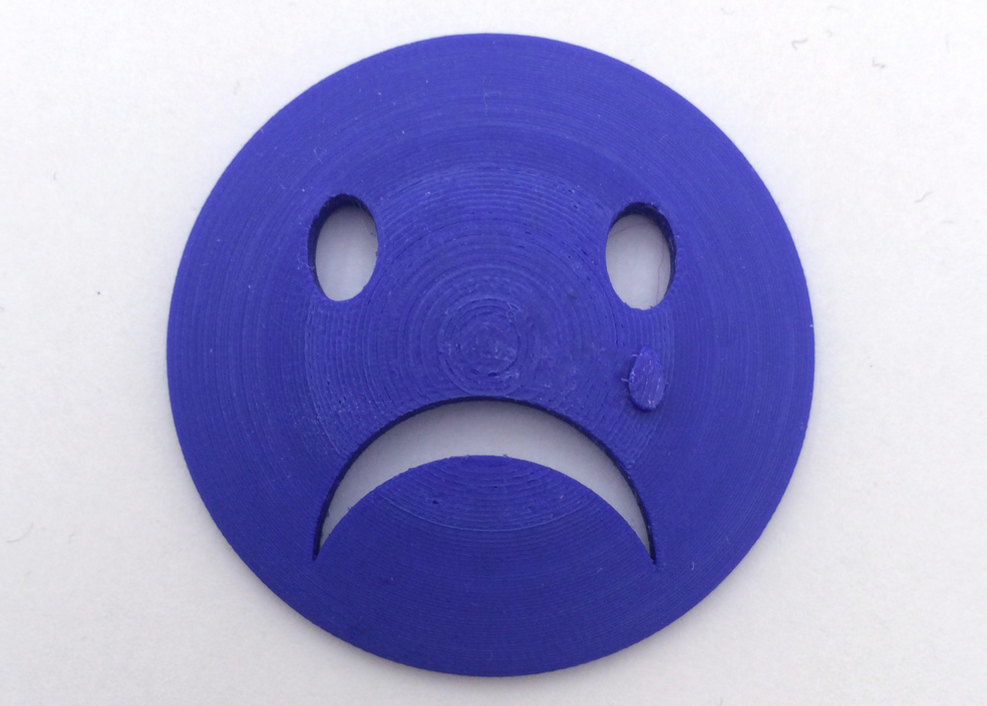Shapeways on US Dept. of Commerce Report: Beware Remixes & Copyright Infringements—They Can Cost You Six Figures
 There’s no better part of a beginning than that of a fledgling industry populated by passionate individuals all enjoying themselves and getting along, working for the common good—for about a New York minute. That’s how long it takes for someone to decide they don’t want to play well with others or for others to begin taking a defensive stance before anyone even had an inkling to attack. And while everyone played fairly nicely within the 3D printing community at first, it was of course just a matter of time before all that gray area concerning copyrights and intellectual property was forced to march down the path to black and white legalities. The thing is—that takes time, and in the meanwhile, everyone is still breaking the rules and arguing, as well as often taking complete advantage of areas still left lawless.
There’s no better part of a beginning than that of a fledgling industry populated by passionate individuals all enjoying themselves and getting along, working for the common good—for about a New York minute. That’s how long it takes for someone to decide they don’t want to play well with others or for others to begin taking a defensive stance before anyone even had an inkling to attack. And while everyone played fairly nicely within the 3D printing community at first, it was of course just a matter of time before all that gray area concerning copyrights and intellectual property was forced to march down the path to black and white legalities. The thing is—that takes time, and in the meanwhile, everyone is still breaking the rules and arguing, as well as often taking complete advantage of areas still left lawless.
We’ve seen bickering and rebelling in terms of cases like 3D printing enthusiasts scanning, printing, and distributing files others claim to own, designers accused of infringing on estates, as well as a hodge podge of infringement cautionary tales and ongoing legal discussions. And of course, the latest brouhaha garnering attention due to some rather unusual tactics is the case of the Thingiverse user/designer who found models she thought were protected for sale on eBay.
Since, the copyright and intellectual property law conversation has been heating up in the 3D printing industry. And, just throwing a bit of fuel on the fire, Shapeways has just released a blog which is relevant to you whether you are a designer or user.
 Recently, the United States Department of Commerce released a whitepaper on remixes, first sale, and statutory damages. While this is certainly great information in any case, the Shapeways team noted that the areas on remixes and statutory damages might be particularly interesting to anyone operating in the Shapeways community—or other 3D printing communities, for that matter.
Recently, the United States Department of Commerce released a whitepaper on remixes, first sale, and statutory damages. While this is certainly great information in any case, the Shapeways team noted that the areas on remixes and statutory damages might be particularly interesting to anyone operating in the Shapeways community—or other 3D printing communities, for that matter.
For Shapeways in particular there are some models that are protected by copyright, but not all.
“That means that the rules for copyright also end up being the rules for models on Shapeways,” states Michael Weinberg, in the Shapeways blog, ‘Why Yesterday’s Copyright Whitepaper Matters to You.’
Published as part of a long review process by Congress, the Administration, and the Copyright Office itself, this report serves a good picture of the current ‘state of play.’ Weinberg states also, quite astutely, that he sees it serving as a solid influence for any imminent changes as well that Congress may be considering making.
“You can think of it as capturing a moment in the evolving consensus (or at least evolving conventional wisdom) of what ‘reasonable’ copyright reform looks like,” says Weinberg.
Of interest to us of course is what happens with remixes. While of course, this is a rather evolved form of plagiarism and certainly often even encouraged within the open-source community, it’s just as often not welcome—and what then? From writing to making music to films, 3D design and 3D printing are certainly far down the list when it comes to everyone being affected—but it’s certainly a contemporary issue.
“While remix is everywhere, its status within the world of copyright law can be complicated,” states Weinberg. “Some remixes require permission from the remix sources in order to comply with the law. Others are protected by fair use and do not need permission. Since copyright infringement can come with hefty penalties (more on that in a second), it is important for remix creators to know which category their work falls into. Unfortunately, that isn’t always a straightforward process.”
Those who make the originals, those who make the remixes, and then those who are involved commercially all get brought into play in the report. The report suggests that while ‘best practice guides’ are important, they may not be sufficient. Multi-stake agreements are suggested, weakly. While there isn’t a deep resolution, one thing you do know is that it’s important to see what copyright protections are in place if you are thinking about ‘borrowing’ a file or model so that you do not end up having to pay copyright damages.

Beware of copyright laws so you don’t end up in a mess, or looking like this. (by Thingiverse user Loubie.)
In terms of how the report handles statutory damages, it states that simply that’s what you would pay were you to infringe on someone’s copyrighted work. There isn’t any subjective talk associated with it; there is a dollar amount. No one has to calculate anything—but the person being sued could be taking a deep and direct hit to the wallet, as there are some damages listed as high as six figures.
“Today it really is possible to expose yourself to hundreds of thousands of dollars’ worth of infringement liability with a few casual clicks of the mouse,” states Weinberg.
While that might be enough to make some people want to shut down their PCs and run the other direction lest they unconsciously open themselves up to a horrific lawsuit, the report does work in favor of reversing huge numbers being attached to penalties, most especially for ‘small scale infringers’ and those who were just basically truly ignorant about the process.
In reading the report, Weinberg also points out that it’s certainly fruitful to take a look at which companies (all involved in this process) are responsible for offering up ideas that would work for or against your own ideals. Overall it would seem that the report has a realistic and fairly supportive view of remixing, which whether we like it or not, is here and running rampant. Whether remixing comes as part of the new online world or not though, copyright infringement must be dealt with and obviously consequences doled out when necessary.
According to Matt Schruers, who did a wonderfully concise analysis of the report also, you can boil down the proffered solutions to the following:
- There is a codified list of nine factors in 17 U.S.C. § 504(c) for courts and juries to consider when determining the amount of statutory damages, including willfulness, and creating some relation between injury and award
- Eligibility is expanded for the lesser categories of damages, such as in cases where a defendant had a good faith fair use defense
- Courts are given discretion to assess statutory damages in cases of non-willful secondary liability in ways other than on a per-work basis, to avoid exorbitant awards that might not be warranted.
“When it comes to copyright statutory damages, the Task Force accurately assesses the problems. The fact that a copyright plaintiff can obtain between $750 and $150,000 per work infringed can chill investment and innovation,” states Schruers. “The high range causes disproportionately punitive awards to fall upon individuals, and the mandatory floor has the potential to leave online service providers liable for large sums of money when awards for large numbers of works are aggregated.”
This certainly gives all of us even more to think about when it comes to digital design and ‘borrowing’ from the work of others. While you may be operating from the comfort of your home in private, others may be judging your actions later. Does this information concern you? Talk about it in the 3D Printing Copyright Laws forum over at 3DPB.com.

Subscribe to Our Email Newsletter
Stay up-to-date on all the latest news from the 3D printing industry and receive information and offers from third party vendors.
Print Services
Upload your 3D Models and get them printed quickly and efficiently.
You May Also Like
Johns Hopkins University Researchers Develop HyFAM Technology
Two scientists from Johns Hopkins University, Nathan C. Brown and Jochen Mueller, have developed a hybrid manufacturing technology they call HyFam, or Hybrid Formative Additive Manufacturing. Their work on this technology...
3D Printing G-Code Gets an Upgrade: T-Code
Good old G-Code still manages many 3D printers, great and small. Just like the STL, it’s a standard that enables collaboration while also holding the additive manufacturing (AM) industry back....
AM Rewind: The Biggest News and Trends of 2024
After a sluggish 2023, driven by persistent inflation and geopolitical tensions, 2024 has seen some recovery. Economic growth climbed from about 2.8 percent in 2023 to a modest 3.2 percent...
Metal Wire 3D Printer OEM ValCUN Announces Plans for 2025 Expansion
ValCUN, a Belgian original equipment manufacturer (OEM) of wire-based metal additive manufacturing (AM) hardware, has announced that the company has entered the next phase of its growth trajectory, making key...

































